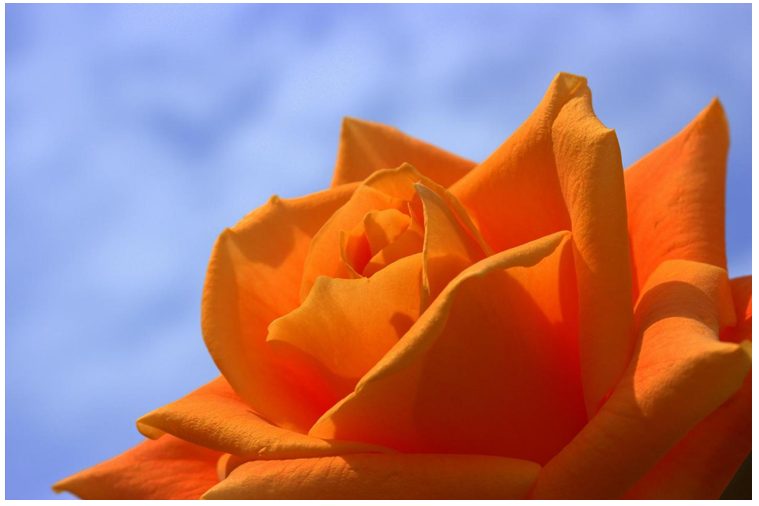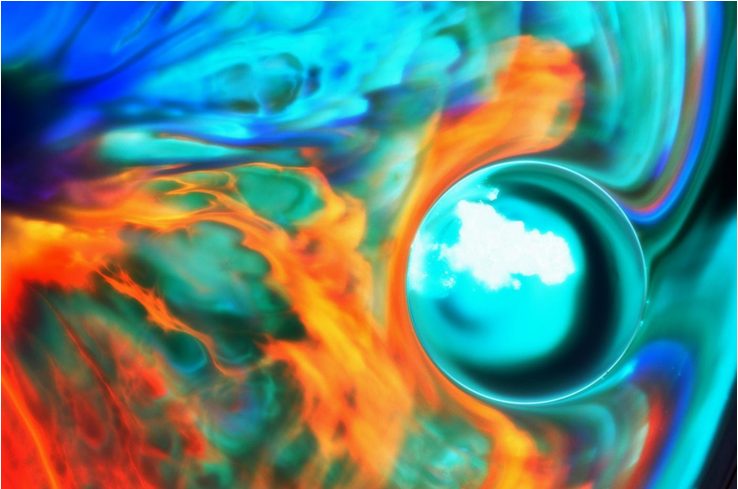When it comes to choosing colors, it’s easy to gravitate towards the brighter colors in our collections.
Our brains are wired to be drawn to bright reds and yellows, but darker, earthier tones are useful too.
Creating these darker tones can be a tricky process sometimes, however. Making these earthy tones lies at the end of the question of what color does blue and orange make?
That’s exactly what we are here to find out, as we will cover not only how to mix blue and orange but also some of the uses you may have for the results.
With all that said, let’s begin!
How you can mix blue and orange
When it comes to mixing blue and orange, there are many ways that you can go about doing it. The first thing to take into account is what mediums you will be using.
Mixing colors is always easiest with paint mediums, but even with that being said there are many different forms of paint. Not only this, but different paint mediums will also have different intensities.
Let’s start with the lightest, which would have to be watercolors. Watercolor paints are surprisingly tricky to get the hang of, but once you know how to use it you will find it to be rather versatile.
Watercolor paints have a light and feathery feel to the colors. This can make it a bit more difficult to achieve your chosen colors, and it can also make it not so ideal for more vibrant colors.
Next we would have acrylic. Acrylic paints are great because you can get darker colors and yet they’re still relatively easy to use.
It’s an easy medium because the paint dries very quickly and is water-based, so you won’t need any chemicals. Oil paint is another popular choice when it comes to painting.
Oil paints have the richest, most beautiful results but it’s at the cost of not being so user-friendly. It is very thick and so layers can take days or even weeks to fully dry.
You also need chemicals for cleaning the brushes that you use. Regardless of what you use, you will want to experiment until you get a feeling for each medium.
This would be best done on a spare surface such as a piece of canvas or paper. We will cover the mixing process of blue and orange specifically in more detail later on in the guide.
For now, choose your medium and play around with them to get a handle on the properties of the colors.
Are blue and orange a good combination to mix together?
Next, before we start looking at the hows of mixing blue and orange, we will examine whether it’s a good idea to begin with. This will be in two sections that we will cover in this step.
First, let’s examine whether they’re good to mix together. To do that, we will need to answer the question of what color does blue and orange make?
The answer to that is that you will end up with a brown color when mixing these colors. Brown is a color that can be arrived at through various different color combinations.
The most basic combination for brown would be blue, red and yellow. Red and yellow make orange, so it makes sense that blue and orange would make brown colors.
Brown may not be the flashiest color but it has many, many uses in art. Don’t worry, we will cover some of these uses in one of the following steps.
The second aspect is whether blue and orange are a good mix when used near to one another. If you look at a standard color wheel, you will notice that blue and orange are direct opposites.
This makes them complementary colors, which means that they will usually look really nice when used with one another.
So if you were making a banner or an advertisement, blue and orange would be a pleasing combination.
Now that we have determined that blue and orange are a good mix, we can go ahead and look at some of the results you can expect from combining them together.
What results you can expect
We know that you can expect brown from mixing blue and orange, but that’s reducing it to something very basic. In fact, the results you can expect can vary rather drastically.
There are many factors that come into play when it comes to mixing any colors. Before we go into some of these factors, we would again like to emphasize just how important it is to experiment.
If you care about arriving at specific colors, then you will want to put in the work to achieve the colors you need.
If you just wing it and go for the first blue and orange shades you have in your art supplies then even if you end up with a nice color it may not be what you wanted.
It takes a bit of time, but playing around with different colors, combinations and quantities is the best way to see what’s possible.
We also mentioned how the mediums you use will play a large role in how the colors turn out. If you want lighter, softer colors then you will be best suited with watercolors.
For something rich and vibrant oils would be your best bet. As we mentioned, oils can be a bit of a pain to use, so acrylics might be a good compromise.
We will cover different ways you can mix various colors more specifically in a future tip, but right now you can try something basic. Find any blue and orange paint shades that you like to begin with.
If your paint set doesn’t have orange, it will certainly have red and yellow. If so, make your own orange with these colors.
When you have your blue and orange ready, mix them together and see what happens. If the orange is lighter than the blue, you will likely end up with a warmer, lighter brown.’
Alternatively, if the blue is really dark then you will end up with a richer brown. For now, simply focus on what these two create.
Then, if you have different kinds of blue and orange try to mix and match these to see what happens.
As we mentioned, we will show you how you can tweak it to your own specifications later on in the guide.
For now, let’s proceed and see exactly what you can even use the blue and orange mix for in a practical sense.
Best uses for blue and orange mixes
If you got 10 random people and asked them for their favorite color, it’s unlikely that brown would be a popular choice. More often than not, people will choose reds, blues or maybe yellow.
Brown may not be a fancy color, but it is very useful in many contexts. For instance, we see brown occur frequently in nature.
We would bet that if you looked outside your window right now you would already see shades of brown. It can be seen in tree bark, dirt, bird feathers, animal fur and many more instances.
That means that if you are creating any kind of nature scene there is a good chance you will need some brown.
Therefore, blue and orange are two colors you will certainly have mixed up on your palette.
There are more nuances to mixing blue and orange, but that is what we will cover in the final tip.
When it comes to creating the colors you need, observation is key.
We covered a few of the uses that brown can have, but there are also things like chocolate, coffee or some skin tones that brown can be used for.
Even with these examples, there is a gradient of browns that you may need. For instance, if you are painting coffee in a cup then it might be a lighter brown if it has a lot of milk inside.
If you don’t mix the colors of blue and orange, they can be used to great effect with one another as well.
For example, imagine you had a big blue ocean with an orange sky above it. The combo of colors would look stunning!
That shows that blue and orange are great for many purposes whether mixed or used with one another.
It will be a combination that is typically best for natural scenes, but you shouldn’t feel limited to that.
If you are making some kind of design that needs pleasing colors then blue and orange would be perfect. It all depends on what you need it for!
Now that we have covered some uses for the combination of blue and orange, let’s finish off with some tips and practical tricks you can use in order to actually mix the colors together.

Lighter and darker blue and orange mixes
A few times in this guide, we have mentioned how important observation is. This is certainly true if you are attempting to make the colors as true to life as possible.
If you are going for a more impressionist style, then you will use colors that speak to your feelings.
However, creating color combinations is all about observing your subject.
Even the most seasoned artists will use some kind of reference in their work, as painting entirely from memory presents problems. Earlier, we mentioned coffee as an example that you can use brown for.
Let’s stick to that to illustrate our point (hot cocoa would also be acceptable.) This would be even more helpful if you make a cup in real life so that you can observe the beverage.
If you don’t put much milk in the coffee, then it will likely be a dark brown. In this case, you will want to use more blue than orange and you would probably want to stick to darker shades of each.
Unless you’re incredibly lucky, it’s unlikely you will have the correct brown right off the bat. This is also why experimenting is so important!
If you need the brown to be darker to match the coffee, then you could add some more blue or maybe a touch of black.
The key is that you need to add very small increments of the additional colors.
If you need the brown to be lighter, then add some more orange or some white. If there is a specific hue to the colors, then you can use colors like yellow, red, purple or really anything you need.
This is true whether it’s coffee, a tree or anything else. Look carefully at the colors of your subject and then play around until you see it in the paint.
If you look closely at your subject, you will find it much easier.
You have so many colors at your disposal that you can use in order to achieve whatever shades of colors you need. It can take some practice and trial and error, but you will get there in the end!
IN SUMMARY
The goal of this guide was to find out what color does blue and orange make. We hope that at the end of this guide you now know this combination.
Now you have everything you need in order to create some amazing colors and artworks! Part of the fun comes from experimenting, and there is no limit to what you can create.
Remember to be observant and try out any colors that could possibly get you where you need to go.
That way you will definitely achieve any color goals you could possibly have.
We know that you can find some amazing ways to use these colors!



